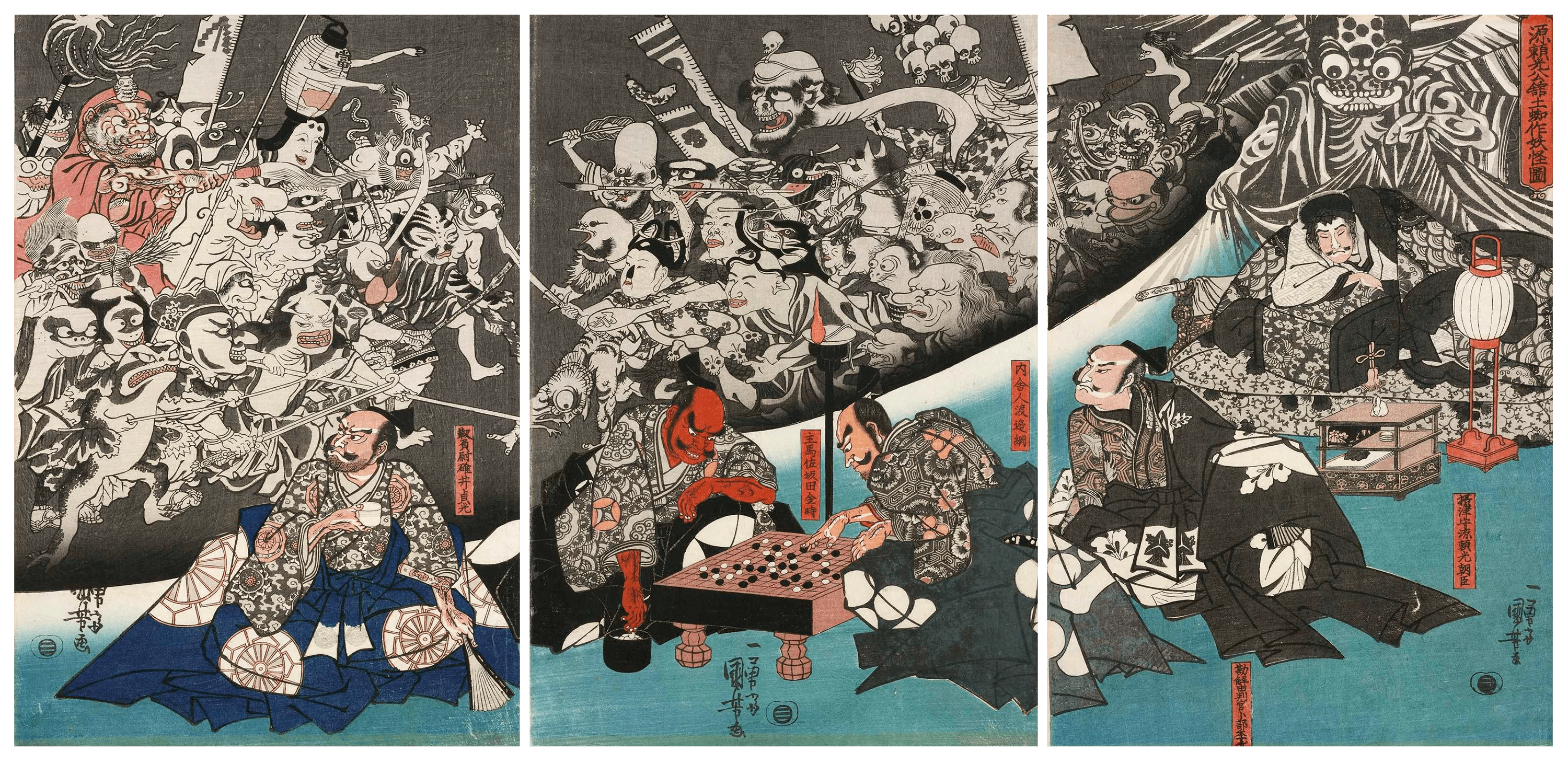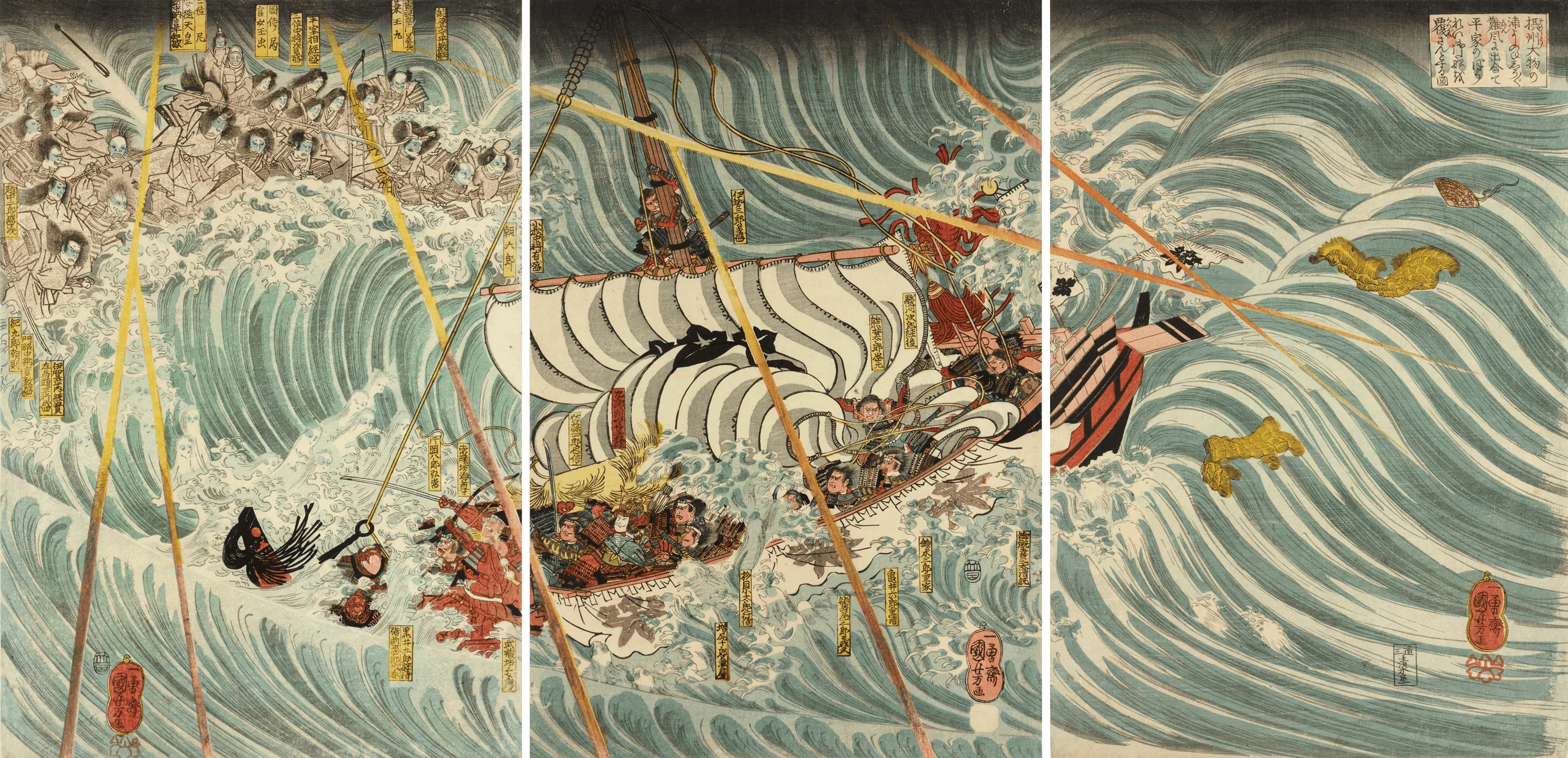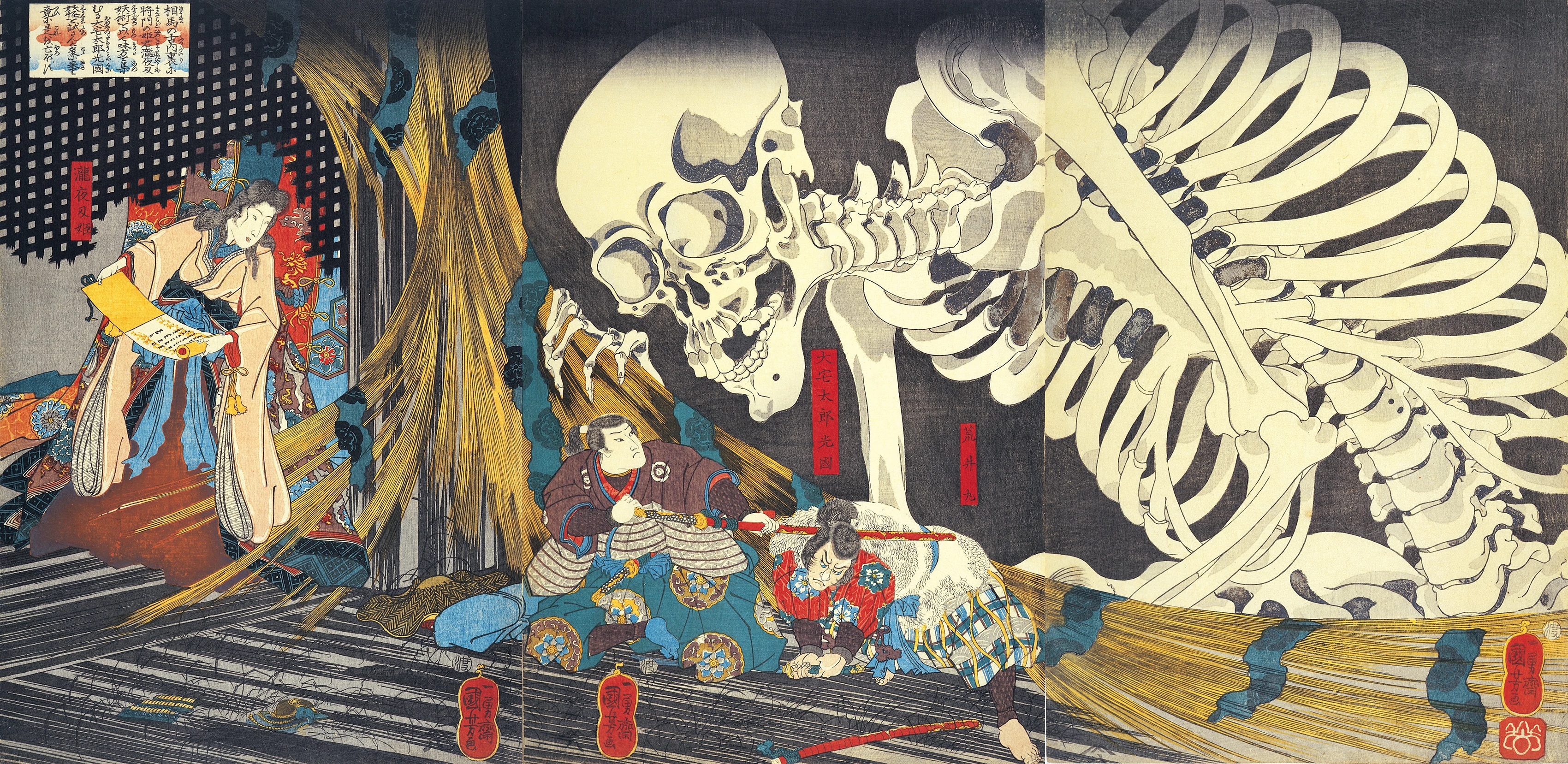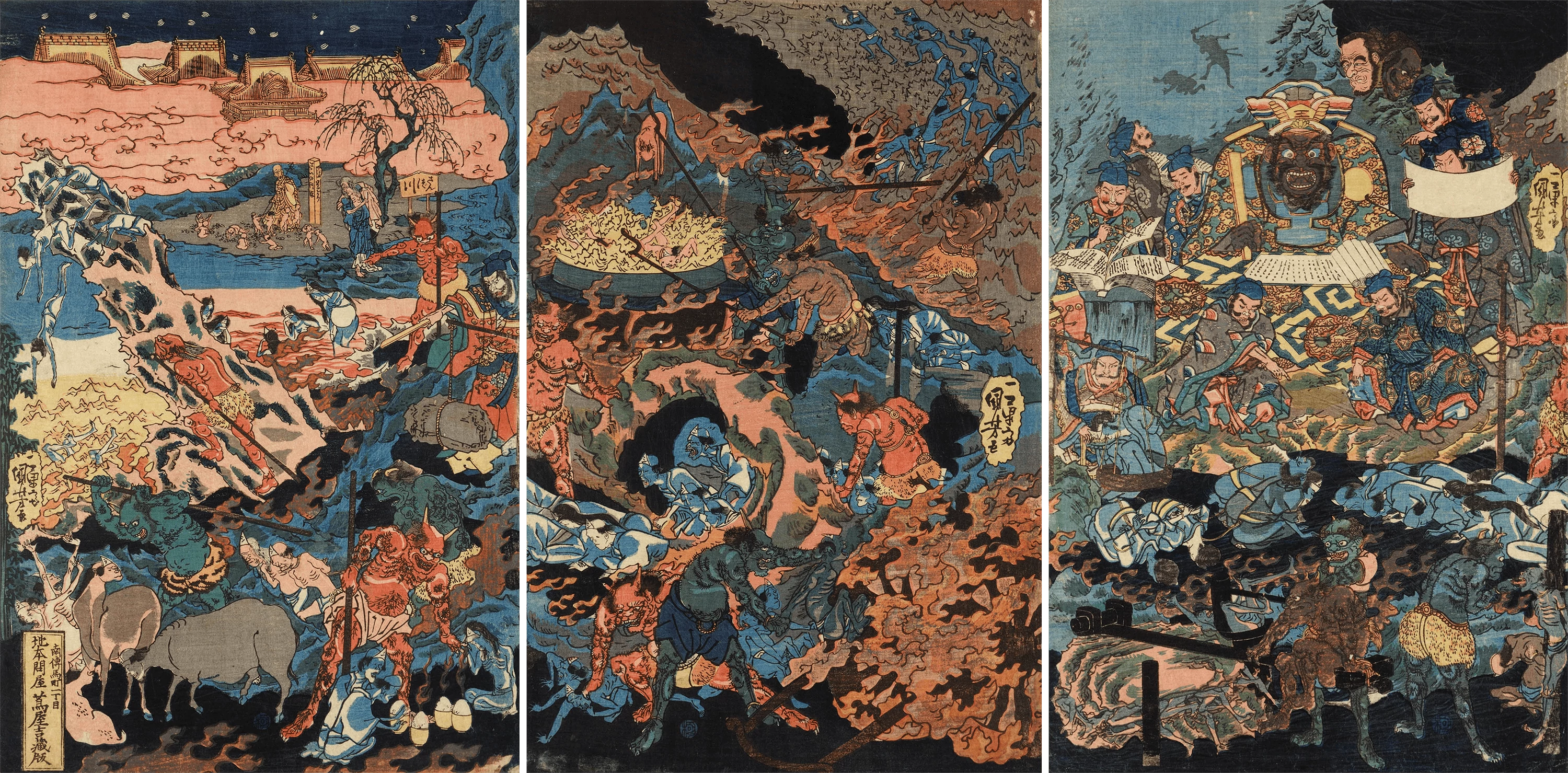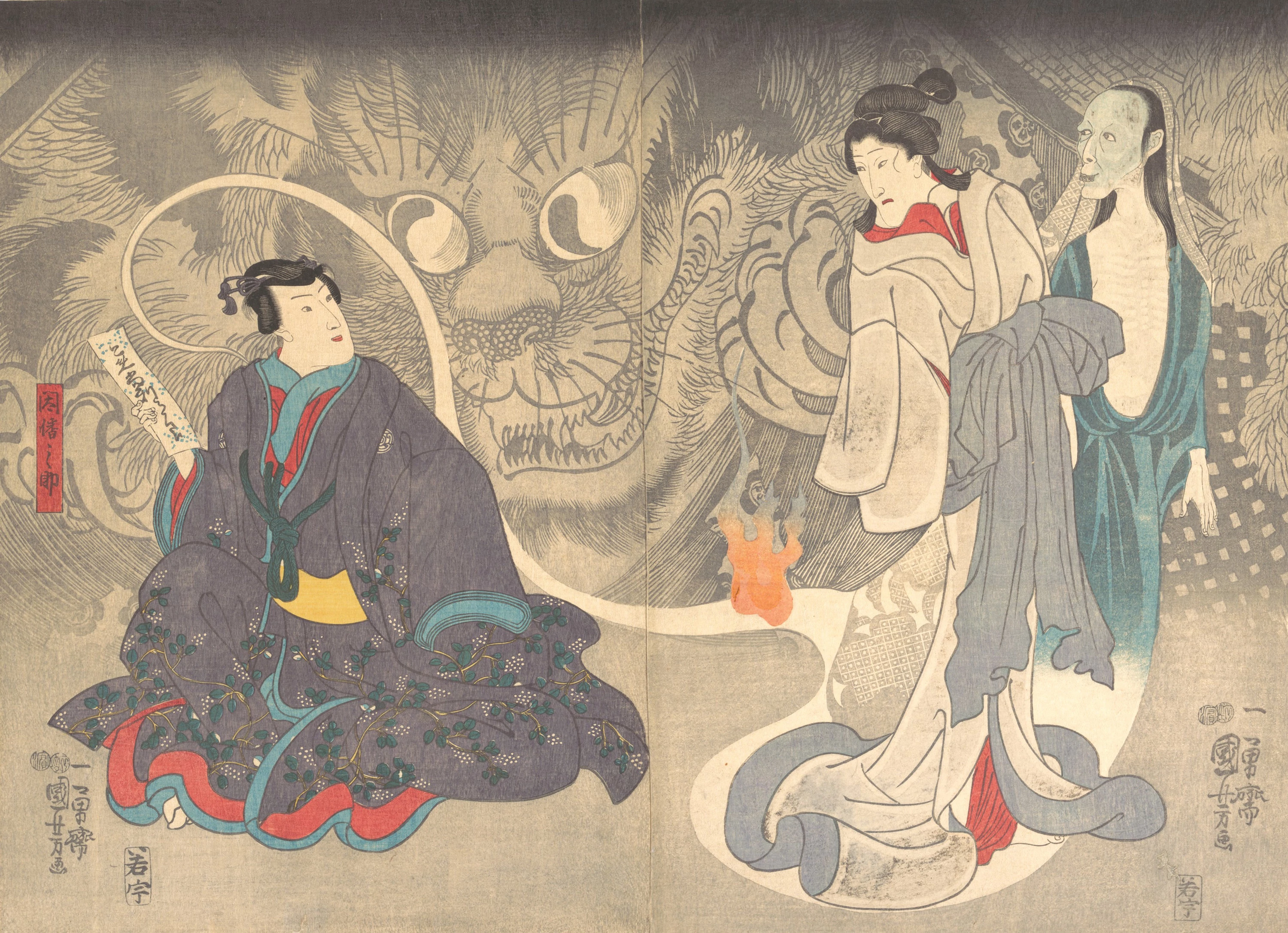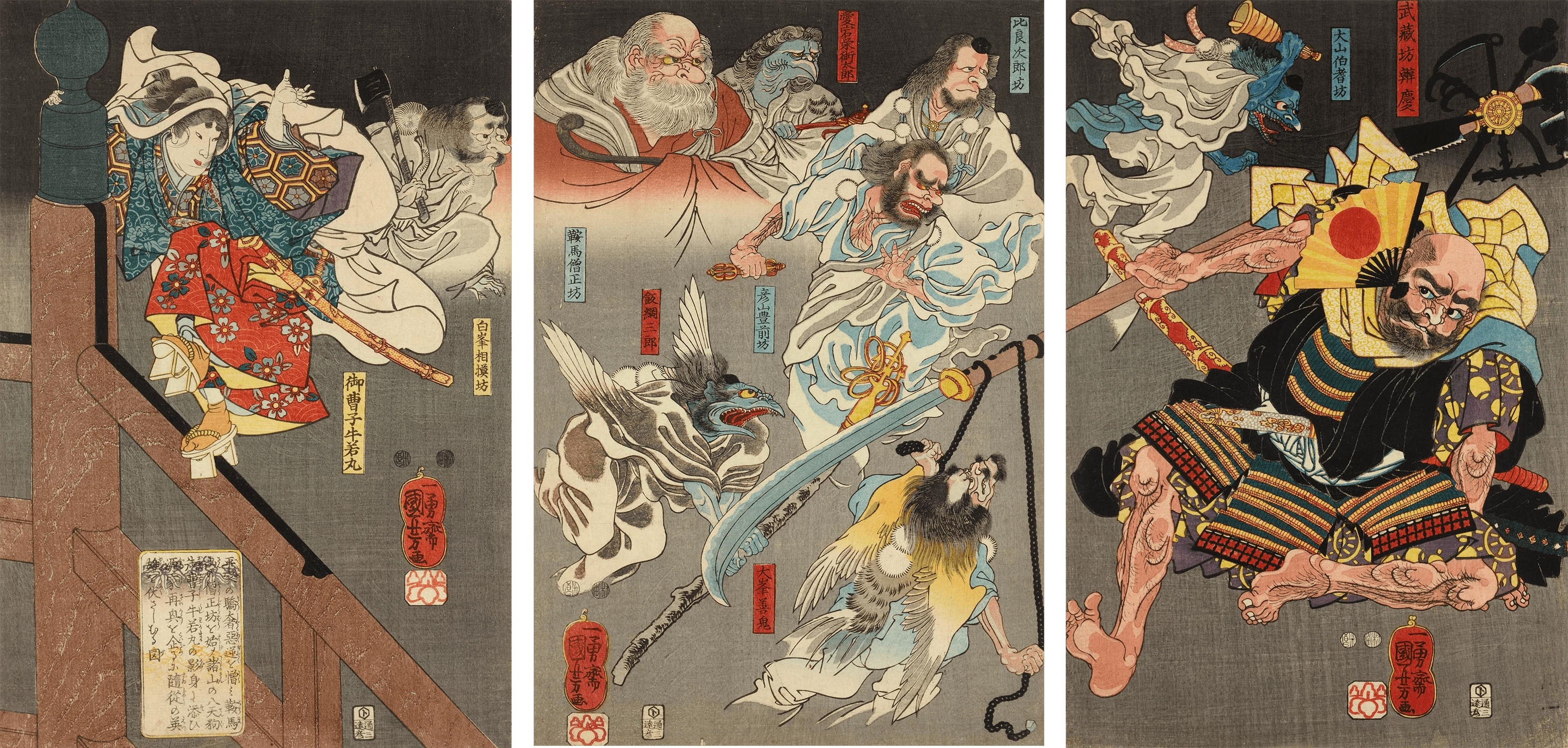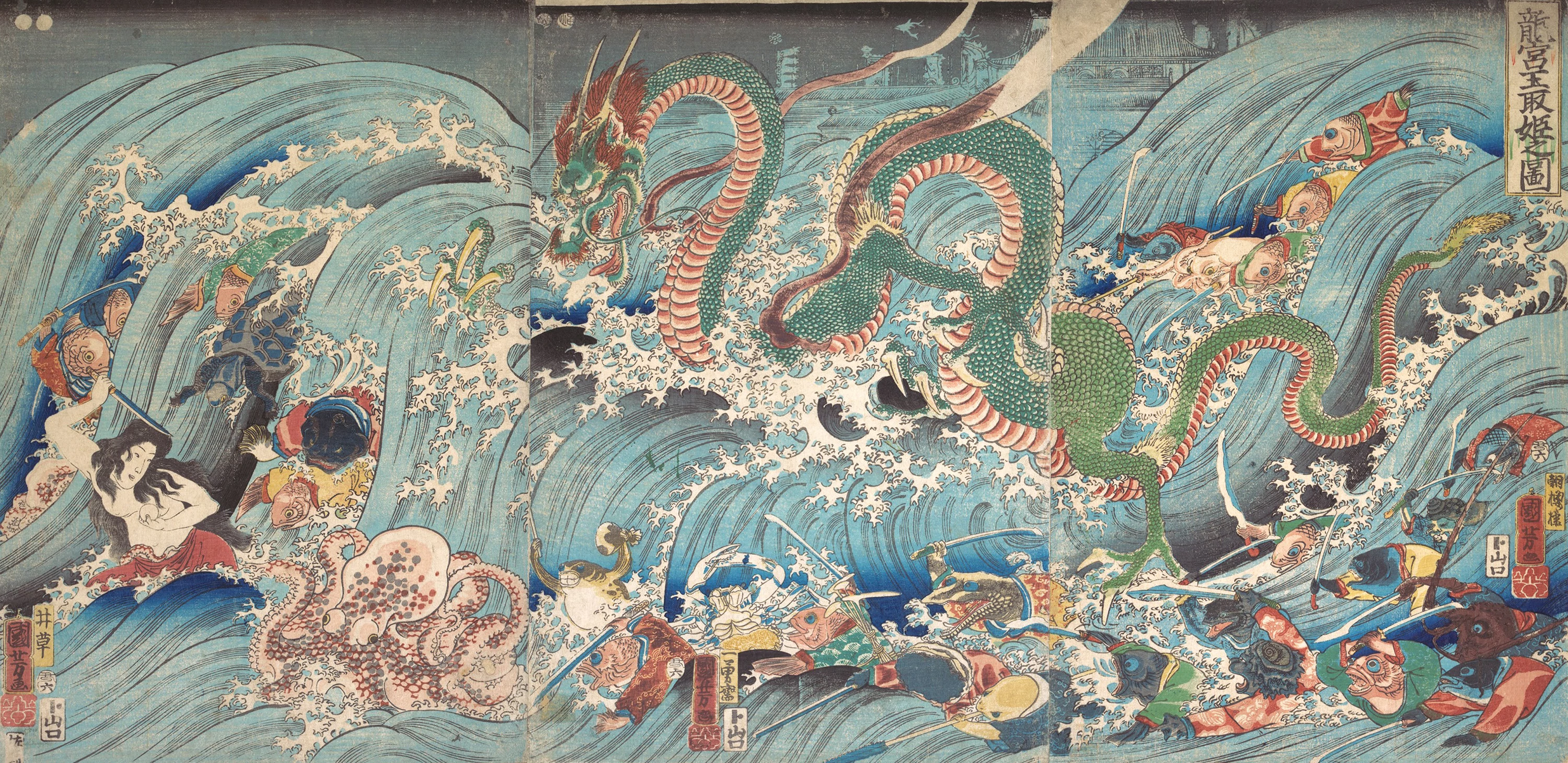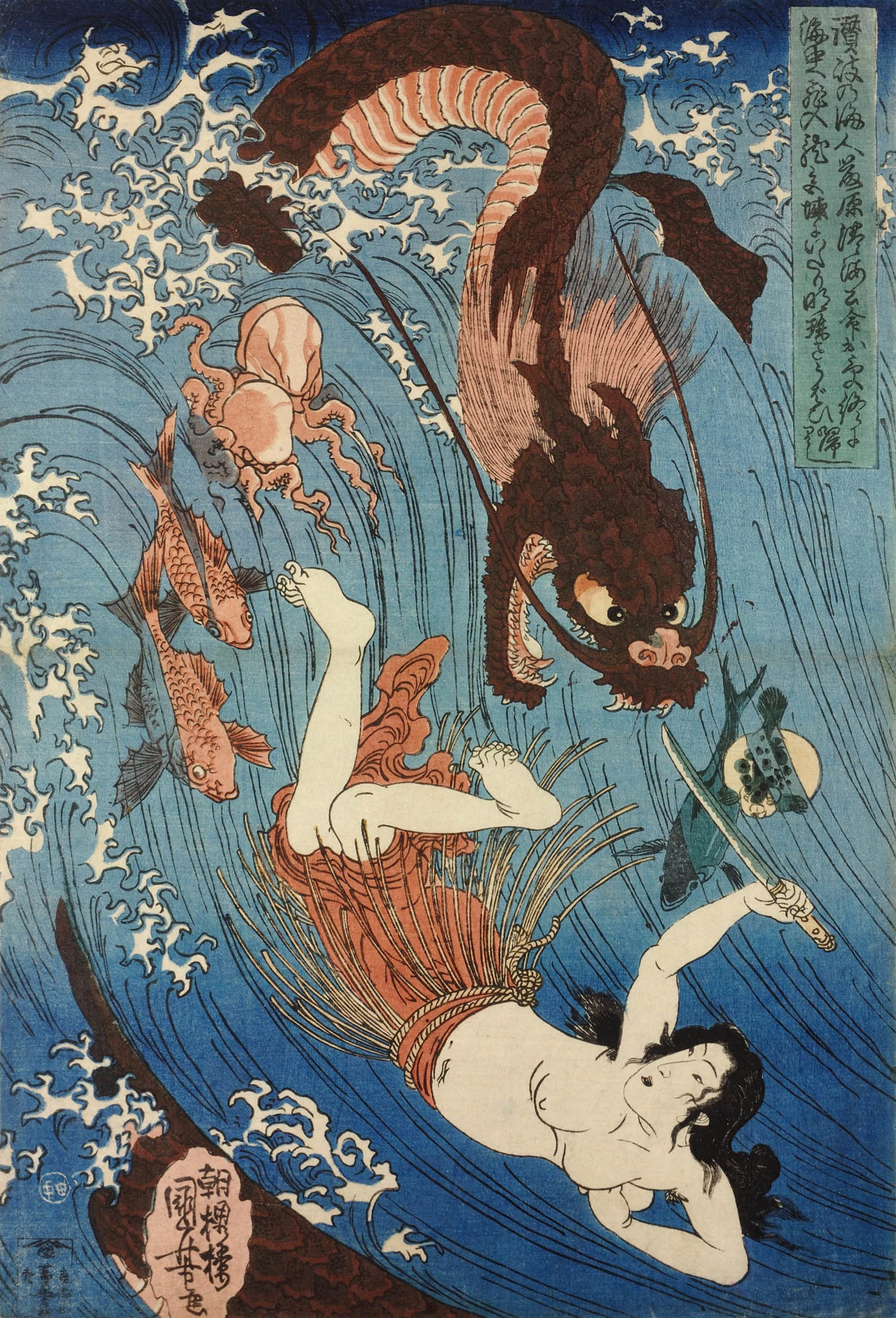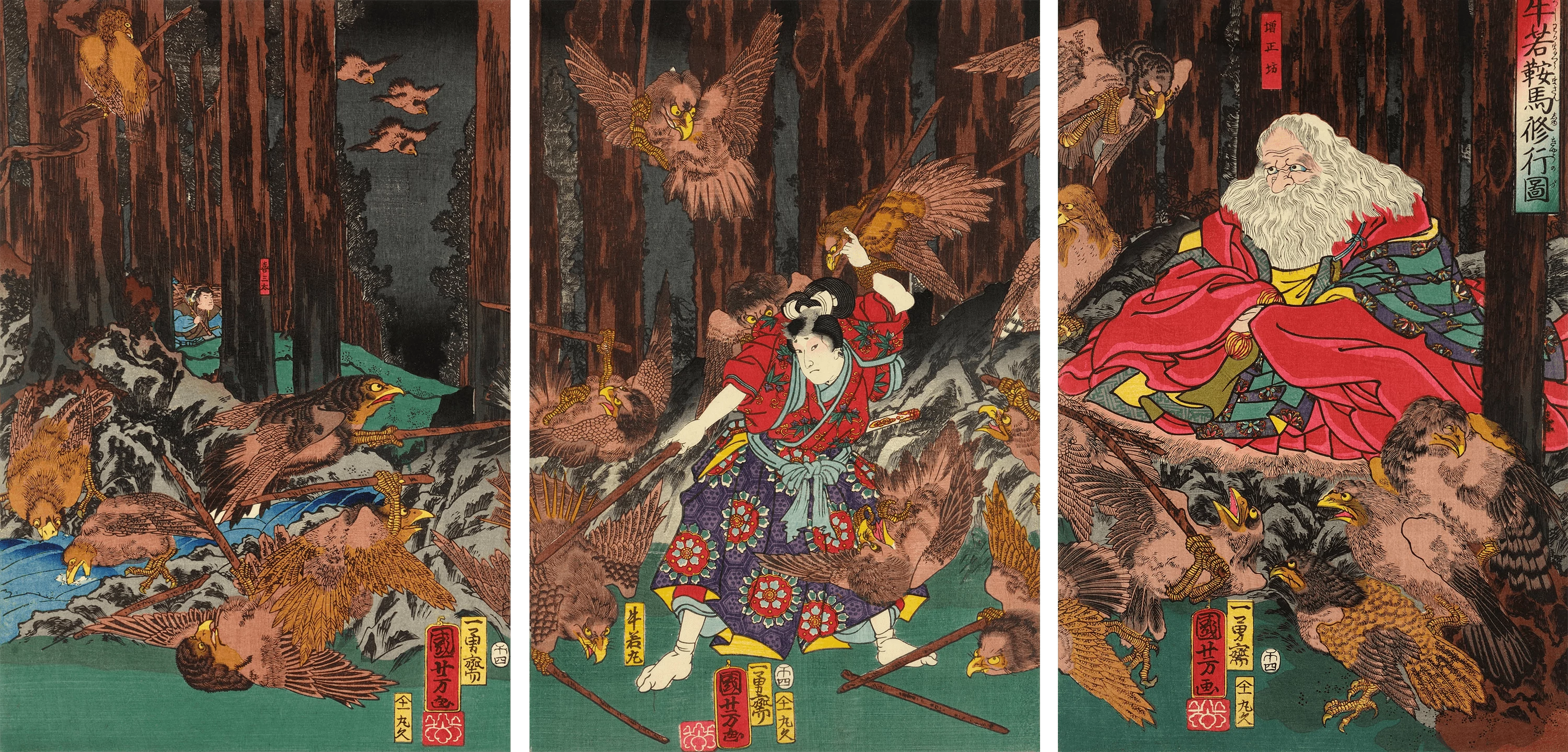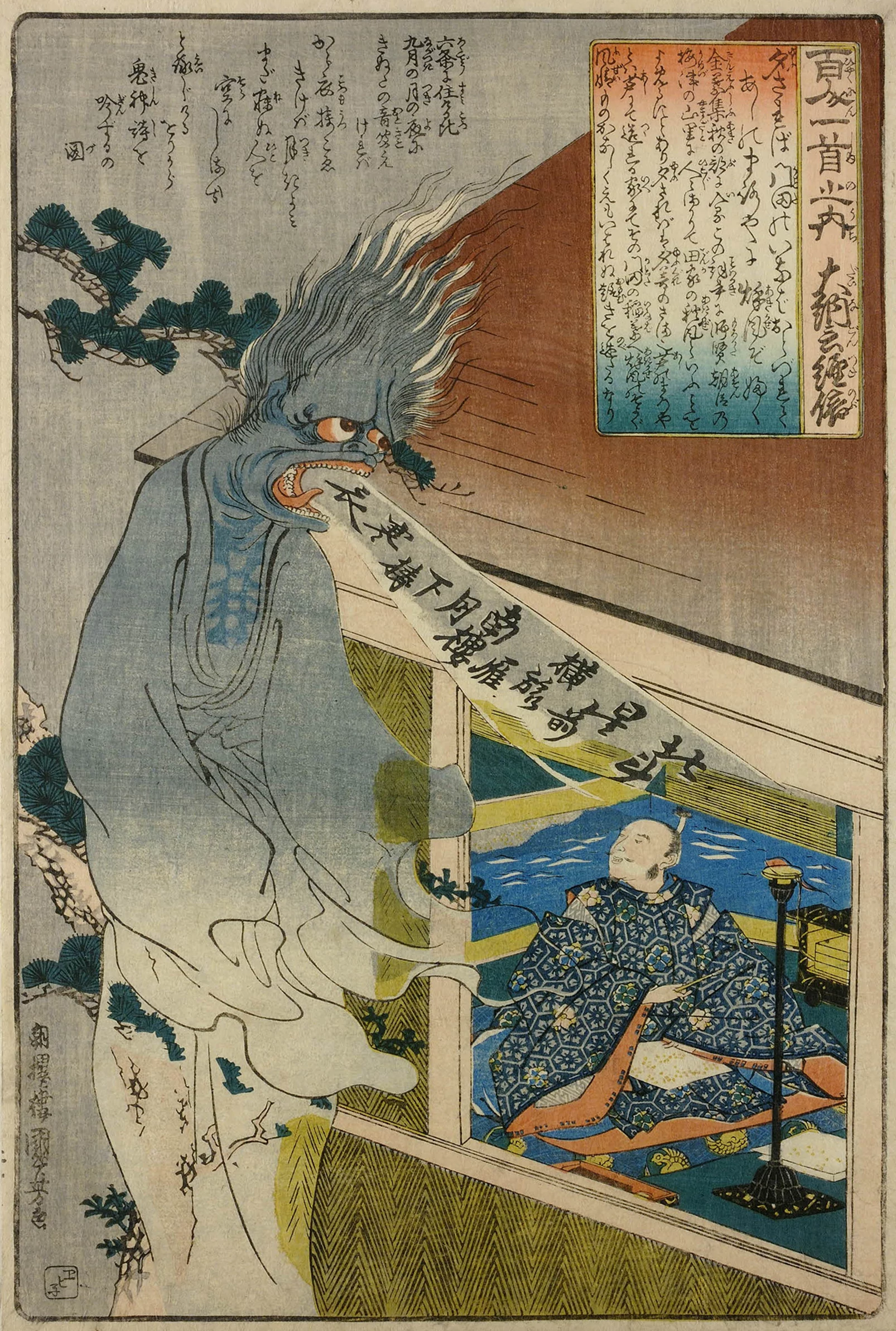Utagawa Kuniyoshi
An underdog artist pits monsters vs. superheroes
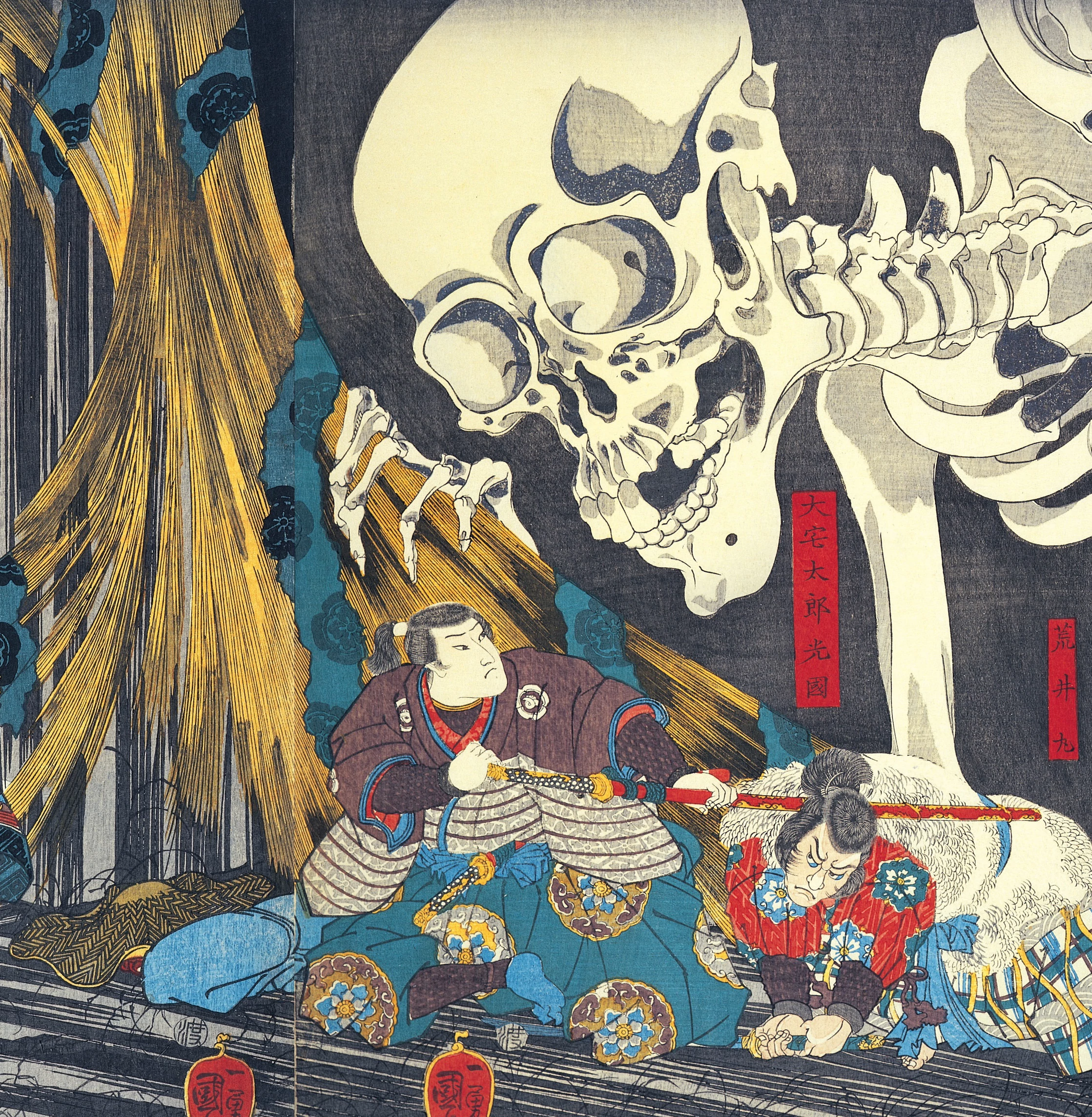

In 1811, the 14-year-old son of a silk-dyer was admitted to Japan’s famous Utagawa school of printing. The boy was named Yoshisaburo, but the school’s master, Toyokuni Utagawa gave him a new name: Kuniyoshi Utagawa. This name lives in history as the artist who brought Japan’s ghosts, demons and heroes to raging, colorful life.
Kuniyoshi, as he was known after joining the Utagawa school, was an able apprentice and graduated as an independent artist in 3 years. But the world of ukiyo-e printmaking was competitive, and Kuniyoshi was up against the best—Kunisada, Hokusai, and Hiroshige were all working contemporaries. For 10 years Kuniyoshi barely scraped by, struggling to win commissions and selling used straw tatami mats to make ends meet.
But every underdog deserves a breakthrough, and a run-in with his old classmate Kunisada, now a very successful artist, lit a fire under Kuniyoshi. Kuniyoshi went back to the drawing board to create a new artistic style. He pulled out all the stops, tossing aside the quiet bijin-ga portraits of gracious women, and the subtle compositions and colors that made competitors like Kunisada famous. More action, more violence, and a whole lot of monsters.
The new Kuniyoshi painted big baddies and brave heroes. In 1827 he was commissioned to create a series of prints based on the tale Shuihu Zhuan, “The Outlaws of the Marsh”—essentially the Robin Hood of Edo Japan. Kuniyoshi’s outlaws were tattooed badasses who battled the 108 demonic overlords known as the “stars of destiny.” Unsurprisingly, Outlaws of the Marsh was hugely popular, and catapulted Kuniyoshi into success.
Kuniyoshi had found his rhythm. Over the next 15 years he kept the Japanese public on the edge of their seats with ghastly images of hideous monsters, giant skeletons, and the valiant samurai who defeated them. Though in his later years Kuniyoshi moved toward quieter subject matter to avoid censorship during the conservative Tenpō reforms, he had forever changed Japanese art—indulging the dark side, glorifying heroism, and laying the foundation for contemporary Japanese media from Dragon Ball Z to Attack on Titan.
...
Got questions, comments or corrections about Utagawa Kuniyoshi? Join the conversation in our Discord, and if you enjoy content like this, consider becoming a member for exclusive essays, downloadables, and discounts in the Obelisk Store.
